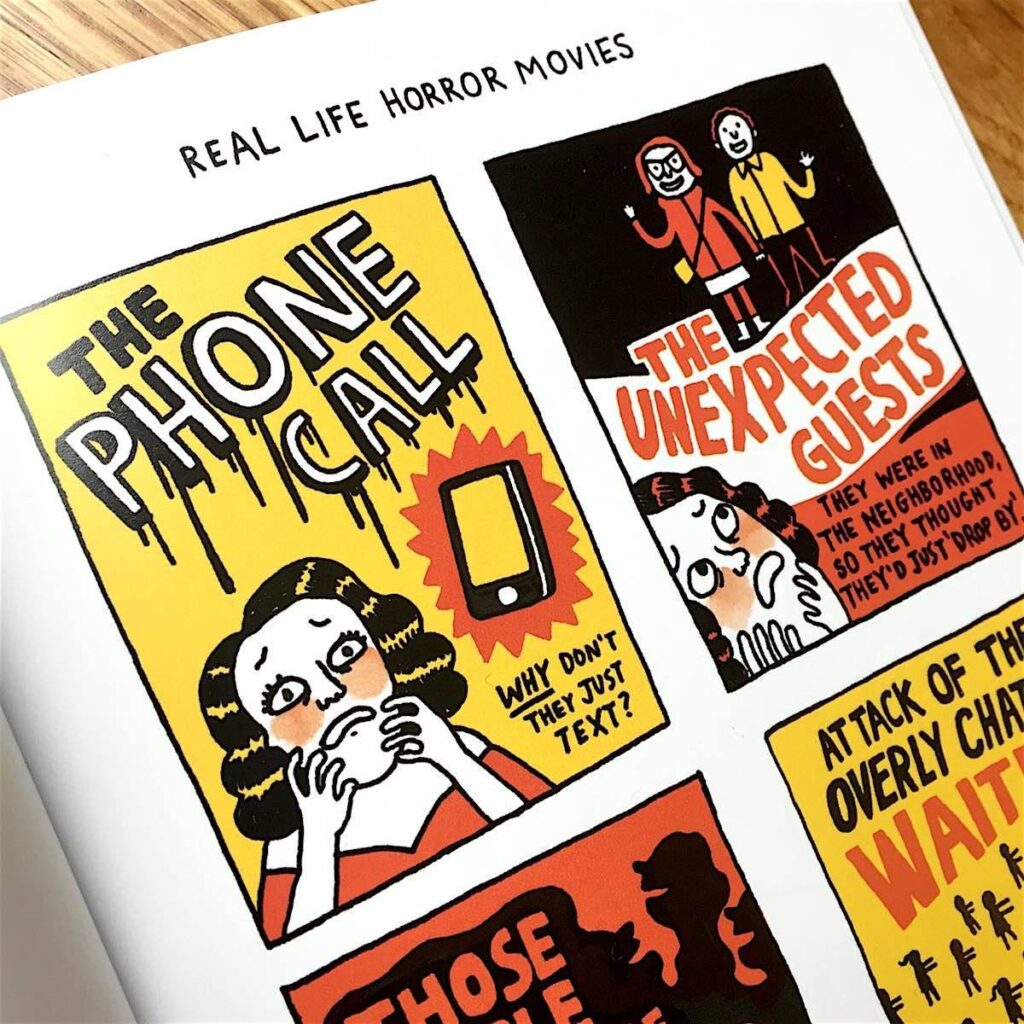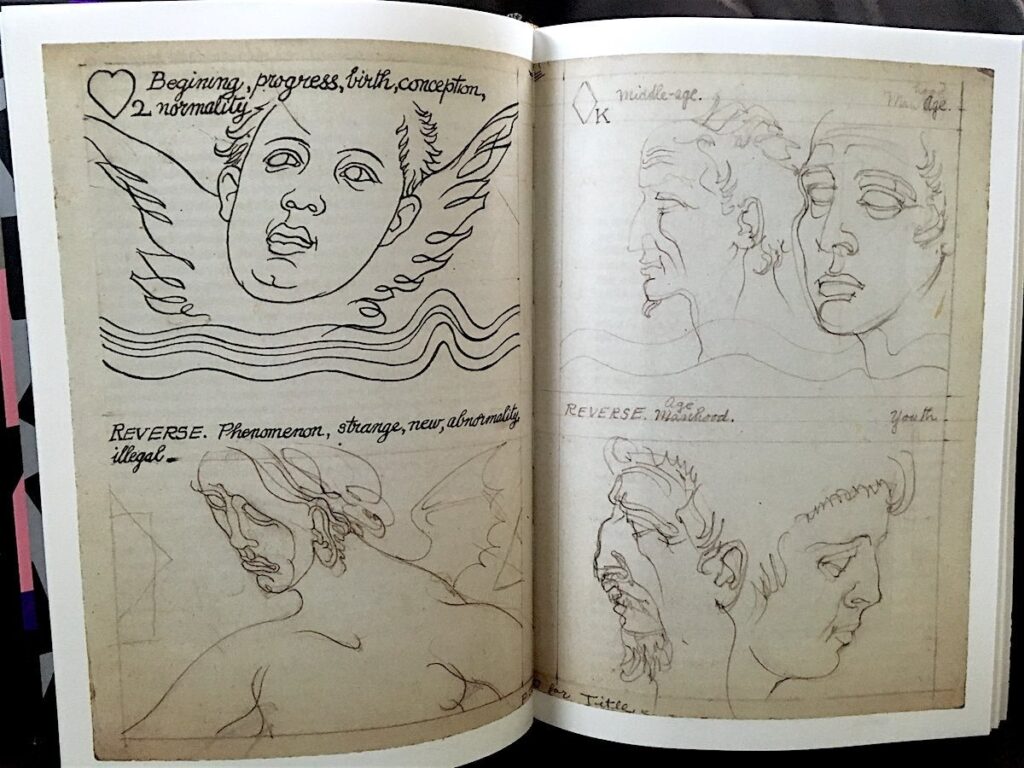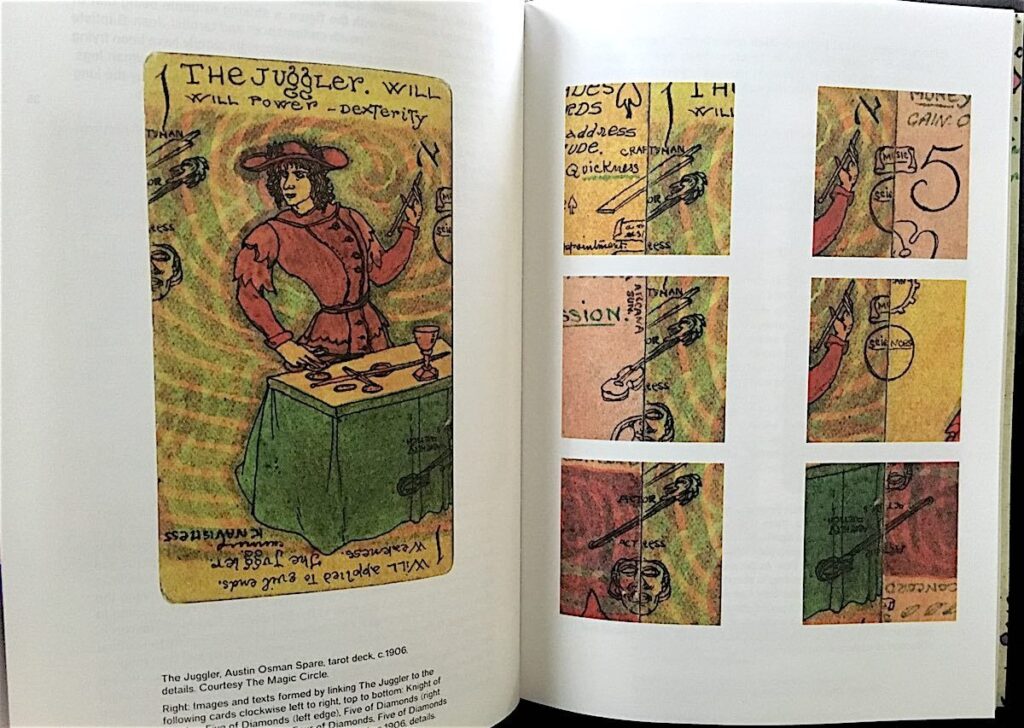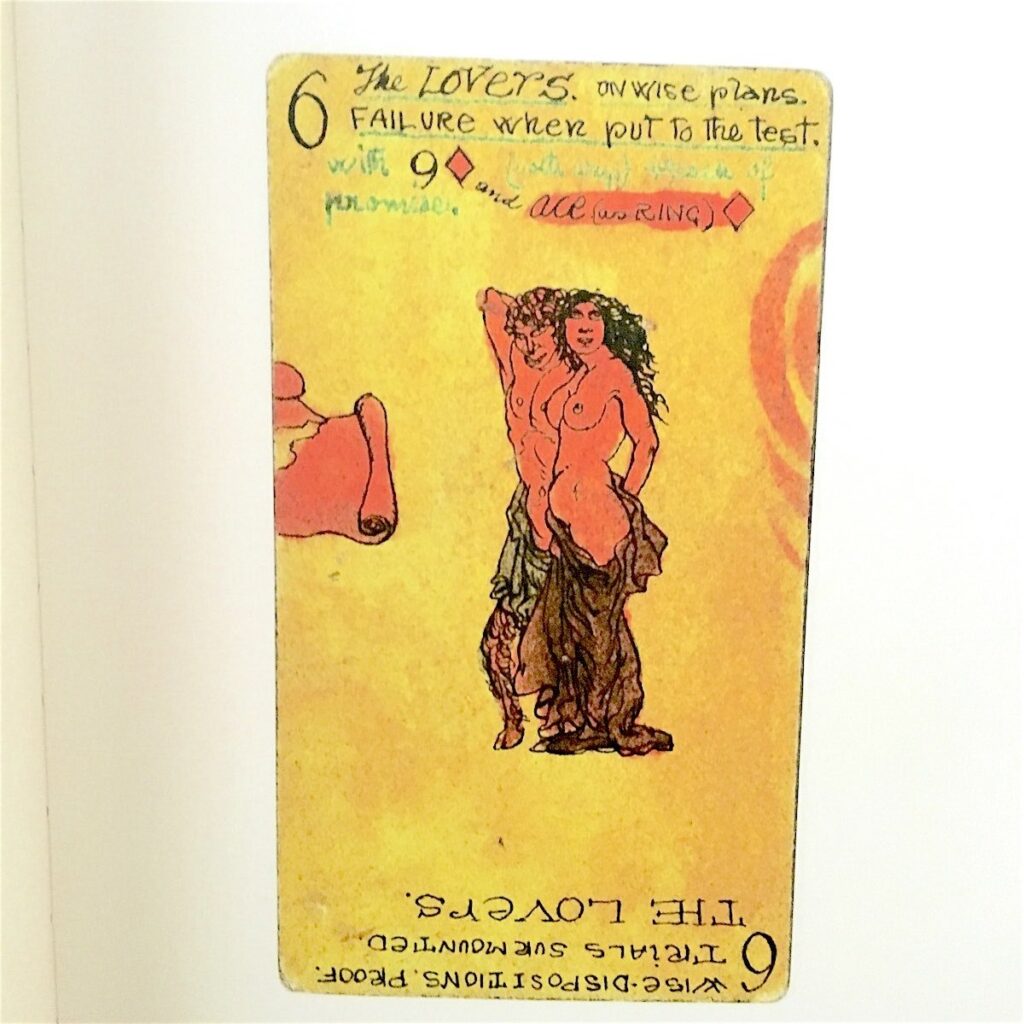Making an Anvil from a Log
Gareth's Tips, Tools, and Shop Tales - Issue #34
Andrew’s Whackin’ Post
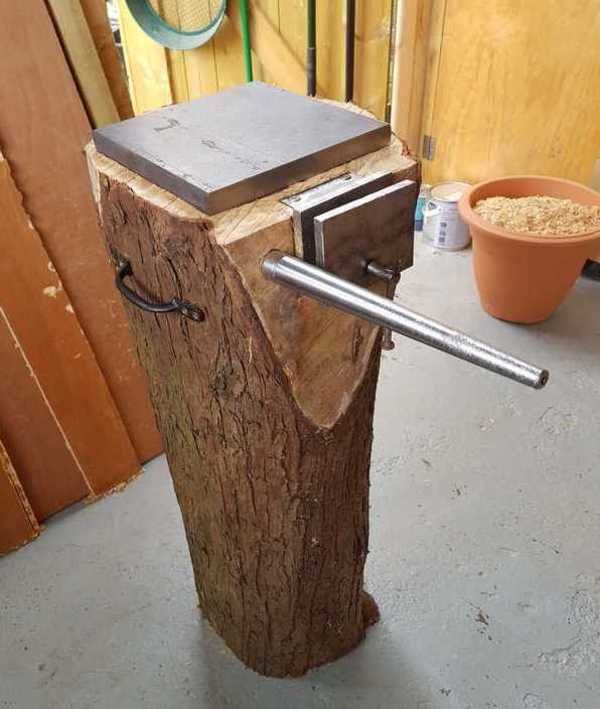
Turning a log into an anvil, vise, and mandrel.
My pal, Andrew Lewis, has a video on YouTube showing how he turned a log into a metalworking station. I love everything about this.
Using Drywall Tape Instead of “Granny Grating”
This is likely useful only for those who do game modeling (like me), dioramas, scale-modeling, model trains, and the like. In a recent Black Magic Craft video on building fuel tanks for gaming terrain, Jeremy shares something I’ve never heard of. Instead of using needle point mesh (a.k.a. “granny grating”) to simulate industrial decking (a traditional practice), use drywall mesh tape. Among other things, the diameter of the threads is more scale-appropriate. Granny grating has always seemed too big to me and is somewhat difficult to work with.
Pull-Down Ceiling Shop Storage
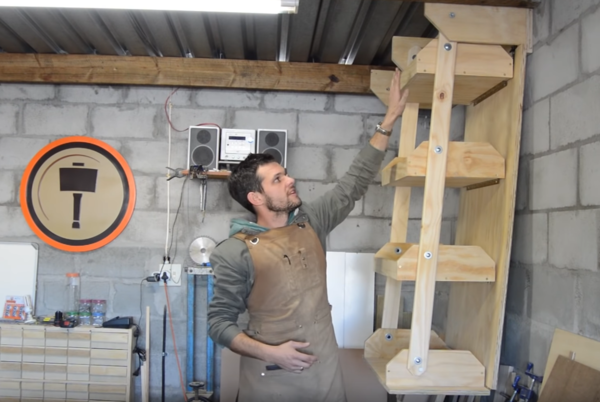
Consider shelving that you can stow in the ceiling.
If space in your shop is at a premium, especially if you have exposed rafters, consider building a set of attic-stair-like storage shelves that you can pull down from the ceiling to access. There are numerous versions of this project online. Here is the build on Woodshop Junkies.
How Label Makers Work
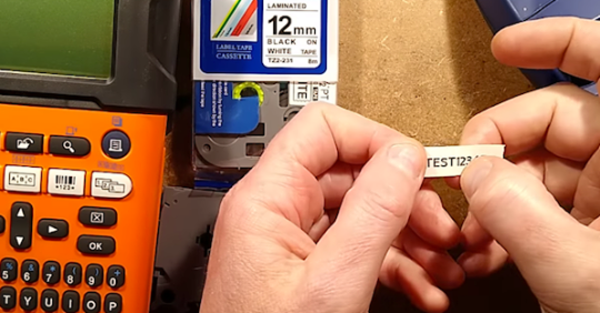
Testing, 1, 2. Testing.
Sean Ragan reminded me how much I love (and still use) my ancient Brother PT-65 label maker in a recent Cool Tools video as he compared it to his newer, swankier P-touch PT-D210. The next day, I ran into this video, where BigClive takes apart a tape on his swanky new Brother PT-E300VP printer to figure out how the printing works. Fascinating stuff. In the process of this explorations, Clive reveals something very interesting about the cartridges used in these printers. They basically retain a copy (in negative) of the printing – on the black film part of the tape that carries the printing “ink.” So, if you take one of these spent carts apart, you’ll see everything that was printed out on that cartridge. Office snoops, take note!
Finding the Center of a Dowel/Rod with Sandpaper?
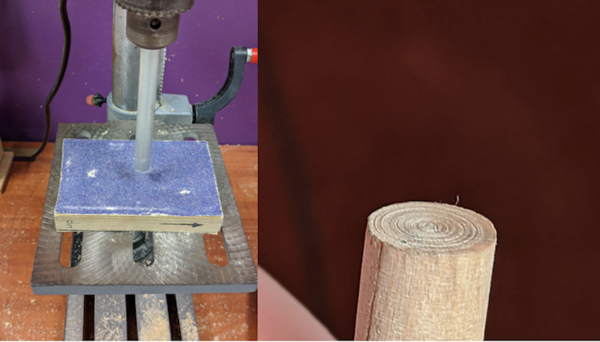
Using only a drill and sandpaper to find a centerpoint? Genius!
Emory Kimbrough writes: “Here’s a method for finding the center of a dowel or any solid rod that will fit into a drill or drill-press chuck. Besides the drill or drill press, it uses only sandpaper. A lot of center-finding methods that use pencil-and-straightedge geometry or store-bought center-finding gizmos become hard to use and inaccurate on small-diameter rods, but this method excels with the skinny little workpieces.
“Just place the rod into the drill chuck and spin the end of the rod against the sandpaper. The sandpaper will scratch a bulls-eye pattern of concentric circles in the rod’s end, revealing the center. Center-punch the bulls-eye and you’re ready to drill into the cylinder’s axis.
“This works for both wooden and metal rods. If the concentric rings aren’t as distinct as you’d like, try a different grit of sandpaper. In the left photo above, some ½” aluminum round stock is being spun in a drill press against some coarse sandpaper glued to a wooden block. In the right photo, you can see the concentric circles sanded into a wooden dowel.”
Making a Heat-Bent Cable Rack
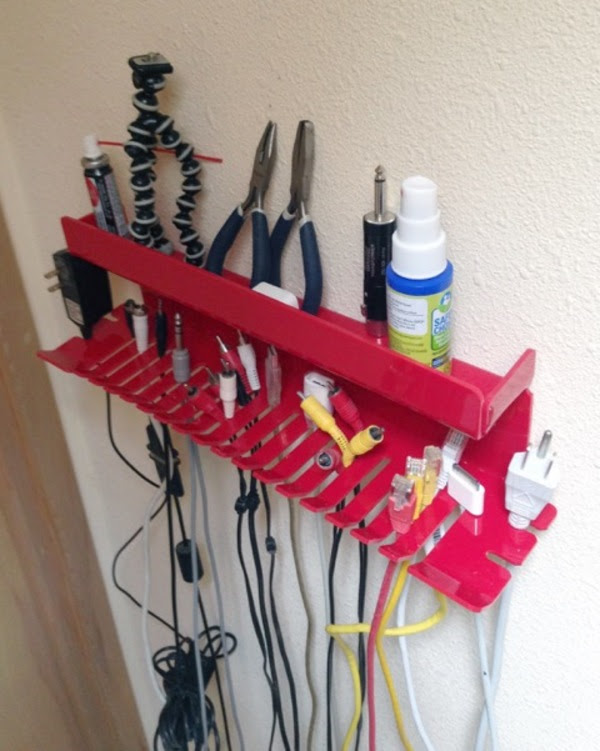
Learn thermoforming while building this useful cable rack.
My fellow HackSpace contributor, Bob Knetzger, sent me images of this wall-mounted cable organizer that he built from thermoformed (heat-bent) plastic. This was featured as a project in HackSpace #22 [free PDF]. Cutting files are there too (under the “Download resources” link).
Must-See Maker TV: DIY Perks
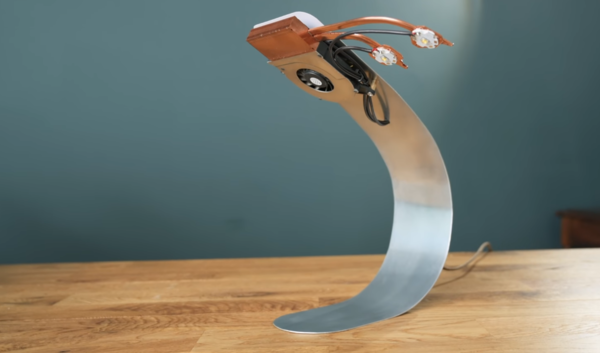
Laptop reclamation ideas that don’t suck.
Over my decades of covering hardware hacking and DIY tech, I’ve written a number of articles and seen countless other articles and videos on what to do with dead or obsolete computers. This piece on DIY Perks, about re-purposing laptop parts, has more clever, cool, and downright useful project ideas than I ever could have imagined. Turning the mic into a headset mic, turning speakers into wall-mounted speakers, making a wall-projecting laser VU meter from a dead hard drive. Wall lights, illuminated picture frames, fan-cooled LED work lights (seen above), a light table, USB battery chargers – so many great ideas!
02/13/20(Gareth’s Tips, Tools, and Shop Tales is published by Cool Tools Lab. To receive the newsletter a week early, sign up here. — editors)











